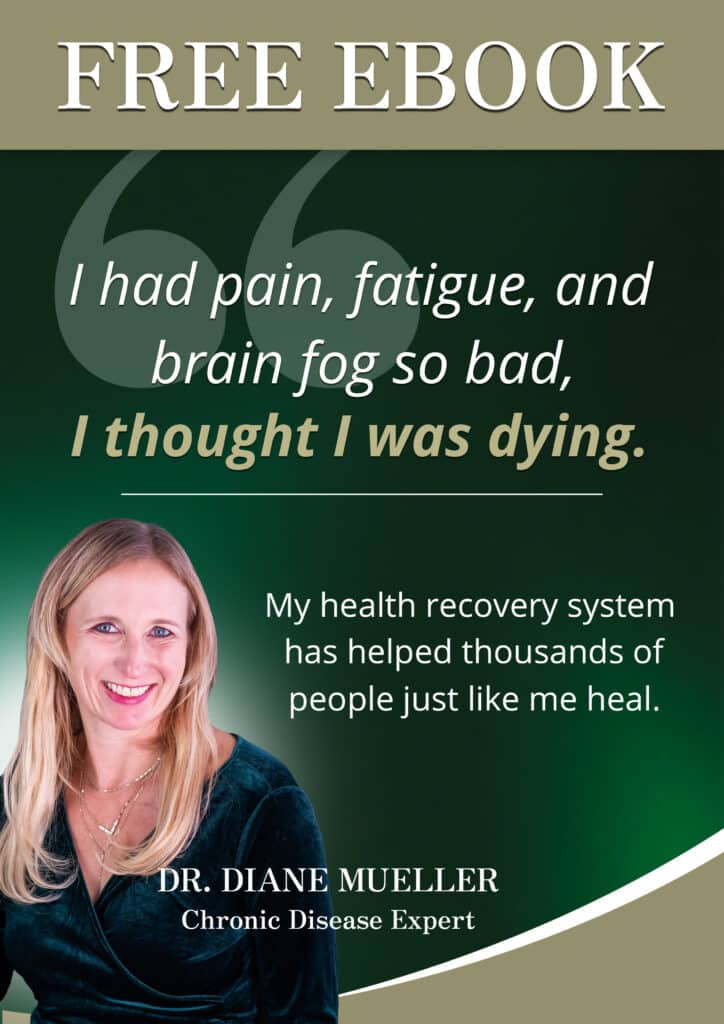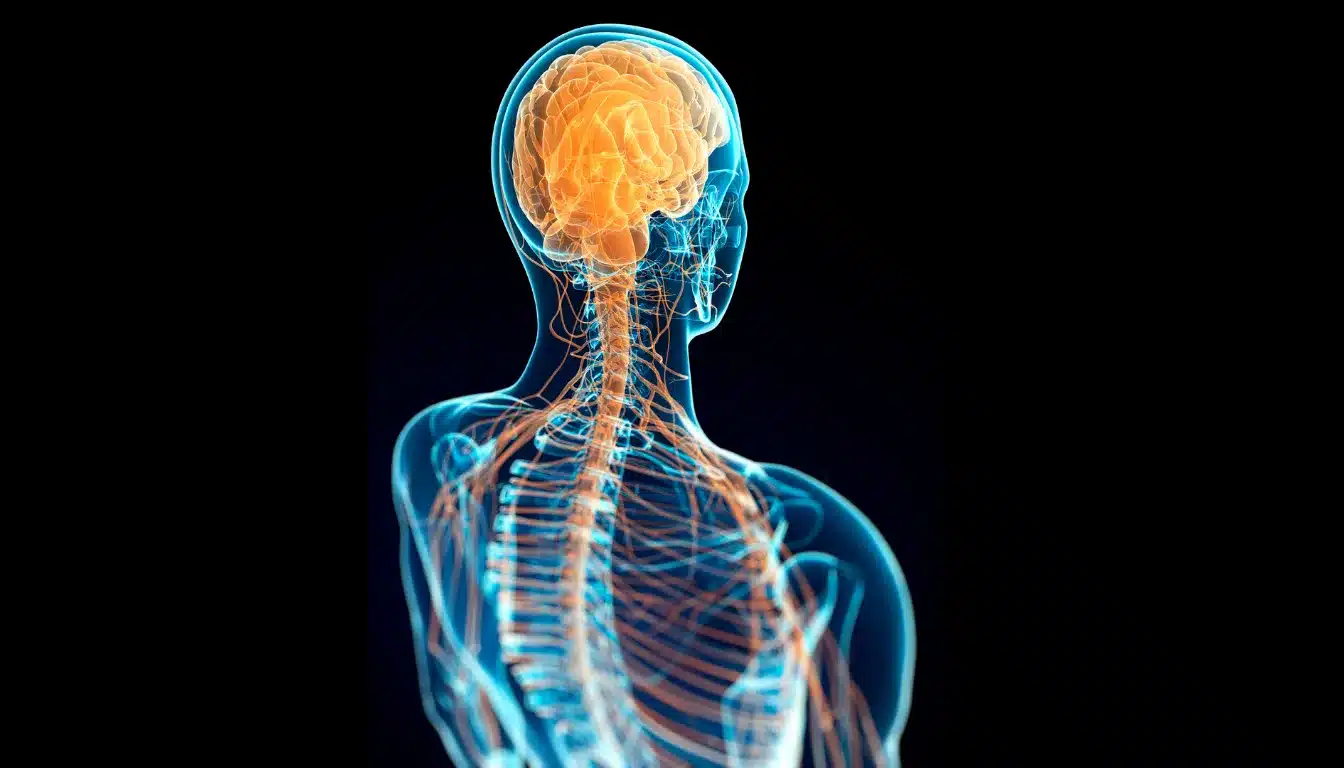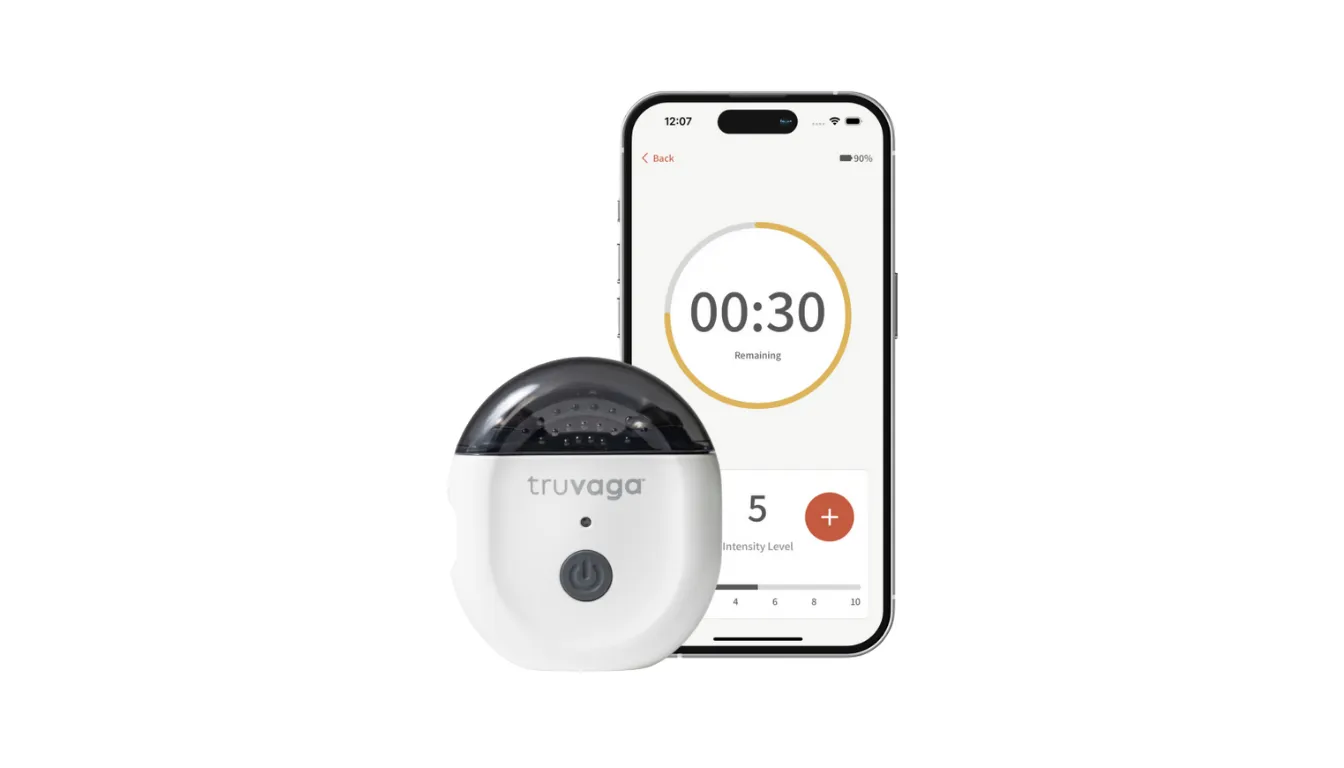
Written by Dr. Diane Mueller
When you’re dealing with POTS (Postural Orthostatic Tachycardia Syndrome), finding effective relief can feel like searching for a needle in a haystack. Your heart races, you feel dizzy, and simple tasks become overwhelming challenges. But what if there were a small device that could help manage these symptoms right from your pocket?
Enter Truvaga – a handheld vagus nerve stimulator that’s been making waves in the POTS community. This FDA-cleared device promises to help regulate your nervous system through gentle electrical pulses, potentially offering the relief you’ve been desperately seeking. Think of it as a reset button for your overactive fight-or-flight response.
You might be wondering: Does this little gadget work for POTS symptoms? Can something so simple make a difference in your daily life? We’ll dive deep into the science behind Truvaga, explore real user experiences, and help you determine if this innovative tool could be your next game-changer in managing POTS.
Truvaga is an FDA-cleared handheld vagus nerve stimulator that uses gentle electrical pulses to help regulate the nervous system in patients with POTS, potentially offering relief from symptoms such as a racing heart, dizziness, and fatigue through targeted nerve stimulation.
The device works by restoring nervous system balance through transcutaneous vagal nerve stimulation (tVNS), addressing the root cause of POTS rather than just masking symptoms, and helping to shift the body from a fight-or-flight overdrive to a more balanced state.
Clinical evidence supports its effectiveness for POTS, with studies showing significant reductions in postural tachycardia, improved heart rate variability, and decreased inflammation markers after just 2 months of daily use (1-hour sessions).
Simple daily use yields measurable results, with most users experiencing immediate post-session calm, short-term improvements within 1-2 weeks, and meaningful long-term transformation around the 30-day mark when used consistently for 2-4 minutes per day.
Truvaga works best as part of a comprehensive approach, when combined with functional medicine strategies such as dietary modifications, mitochondrial support, compression garments, and stress management techniques, rather than as a standalone treatment.
Success requires consistency and proper integration with lifestyle changes, avoiding ordinary POTS management mistakes like relying solely on medications or treating symptoms in isolation rather than addressing underlying nervous system dysfunction patterns.
POTS isn’t just another acronym to memorize—it’s a complex condition that affects millions of people who often feel dismissed by traditional medicine. Let’s break down what you’re dealing with and why your nervous system might hold the key to feeling better.
Picture this: you stand up from your couch, and suddenly your heart starts racing as if you’ve just sprinted up three flights of stairs. That’s POTS in action.
Defining POTS involves examining the numbers. Your heart rate jumps by 30 beats per minute or more within 10 minutes of standing up, without your blood pressure taking a significant dive. It’s not just feeling dizzy when you get up too fast (we’ve all been there). This is your autonomic nervous system, essentially short-circuiting every time you change positions.
Symptoms vary widely and can be severe from person to person. You might experience lightheadedness that makes you grip the nearest wall, heart palpitations that feel like your chest is hosting a drum solo, or chronic fatigue that no amount of coffee can touch. Throw in headaches, nausea, and that frustrating brain fog where you can’t remember if you locked the door five minutes ago.
The numbers tell a story that’s both staggering and isolating. An estimated 1-3 million Americans live with POTS, and it predominantly affects young women, often dismissed as “just being anxious“ or “needing to exercise more.“ (Sound familiar?)
Your nervous system is in control here, and it’s experiencing an identity crisis. The sympathetic system (your fight-or-flight response) and parasympathetic system (your rest-and-digest mode) are supposed to work together like dance partners. In POTS, they’re more like two people trying to lead the same dance, stepping on each other’s toes and sending mixed signals to your heart and blood vessels.

Think of your vagus nerve as the body’s master conductor, orchestrating everything from your heartbeat to how well you digest that sandwich you had for lunch.
Your vagus nerve controls the essentials that keep you functioning normally. It regulates heart rate, manages digestion, and helps your body respond appropriately to stress. When it’s working well, you don’t even notice it, kind of like an excellent sound engineer at a concert.
POTS throws this delicate balance completely off-kilter. Your parasympathetic system essentially goes offline when you stand up, while your sympathetic system hits the panic button. It’s like your body thinks standing up is an emergency that requires immediate action. Your heart starts pounding, blood pools in your legs, and your brain doesn’t get the memo that everything’s fine.
Truvaga steps in with a surprisingly simple solution: transcutaneous vagal nerve stimulation (tVNS). Instead of masking symptoms with medications, it works to restore what experts call “sympathovagal balance.“ Think of it as giving your nervous system a gentle reminder of how it’s supposed to behave.
The science behind this approach targets something that most doctors miss—those pesky anti-adrenergic autoantibodies and inflammation patterns that keep your nervous system stuck in a malfunctioning mode. Rather than just treating symptoms, you’re addressing the underlying causes of why your body developed these faulty patterns in the first place.
Let’s clear up some myths that might be holding you back from achieving actual healing, instead of just managing symptoms.
Myth #1: Beta-blockers are your only real option. Here’s the thing—medications like beta-blockers can make things worse by blocking your body’s ability to deliver energy where it’s needed most. You might feel calmer, but you’re not addressing the underlying reason why your nervous system is misfiring in the first place. It’s like putting a Band-Aid on a leaky pipe instead of fixing the actual leak.
Myth #2: Just eat more salt and exercise, and you’ll be fine. While increasing salt intake and gentle exercise can help manage symptoms, they’re not magic bullets. Your nervous system has essentially learned bad habits, and lifestyle changes alone rarely “unlearn” these deeply ingrained patterns. You need something that can rewire your autonomic nervous system’s response to position changes.
The real issue everyone misses? Your nervous system gets stuck in these dysfunctional patterns like a record player with a scratch. Traditional treatments focus on managing symptoms rather than helping your nervous system regain its normal function. These “stuck” patterns perpetuate themselves through habitual signaling errors—your body keeps doing what it thinks it’s supposed to do, even when it’s completely wrong.
That’s where targeted interventions like Truvaga become game-changers. Instead of just coping with POTS, you’re teaching your nervous system new, healthier patterns.

From a functional medicine lens, Truvaga represents a shift from symptom suppression to nervous system retraining. Here’s how this handheld device addresses POTS at its root.
Transcutaneous vagal nerve stimulation (tVNS) delivers gentle electrical pulses to your vagus nerve through two main pathways—either via your neck (cervical stimulation) or your ear (auricular stimulation). Think of it as giving your overwhelmed nervous system a gentle wake-up call.
The clinical evidence is compelling. A 2023 randomized clinical trial tracked POTS patients who used tVNS for just one hour daily over two months. The results? Significant reductions in postural tachycardia, improved heart rate variability (HRV), and decreased inflammatory cytokines like TNF-α. The study used a 20 Hz frequency at one mA below the discomfort threshold—parameters that Truvaga mimics in its 2-minute sessions.
What’s particularly interesting is that blood pressure remained stable throughout the trial. This suggests Truvaga‘s benefits extend beyond simple autonomic modulation—it’s actually helping improve vasoconstriction and addressing the underlying mechanisms that trigger POTS episodes.
Enhances parasympathetic activity, shifting your nervous system into that coveted “rest-and-digest“ state
Reduces sympathetic overdrive, which directly tackles that racing heart sensation
Decreases anti-adrenergic autoantibodies and inflammation, addressing the root causes that many POTS patients face
Here’s where Truvaga truly shines in a functional medicine approach—it’s not meant to work in isolation. Competent practitioners combine vagal nerve stimulation with comprehensive healing protocols that address the entire picture of your health.
Dietary modifications like Paleo-ketogenic approaches that reduce inflammation
Mitochondrial support to optimize cellular energy delivery
Stress management techniques that complement the device’s calming effects
Think of consistent Truvaga use (2-4 minutes daily) like learning to brush your teeth with your non-dominant hand. Initially, it feels awkward and unfamiliar. But with practice, you’re literally rewiring dysfunctional nervous system patterns that have kept you trapped in POTS symptoms.
The personalized care aspect is essential. Functional medicine practitioners don’t prescribe one-size-fits-all protocols. They tailor Truvaga use to your specific needs, whether you’re dealing with chronic pain, long COVID-related POTS, or other coexisting conditions that complicate your healing journey.
This approach recognizes that your nervous system didn’t become dysregulated overnight, and it won’t heal overnight either. However, with consistent, targeted intervention, you’re giving your body the tools it needs to function optimally again.
Getting started with Truvaga feels less intimidating once you know the simple steps. Here’s your roadmap to making this nervous system reset tool work for you.
Download the companion app first — this becomes your control center for tracking sessions and adjusting intensity levels. The Truvaga Plus syncs seamlessly, letting you choose between sleep-focused or mood-focused sessions depending on what your body needs that day.
Apply the Signaspray to your neck where you can feel your pulse. This conductive solution helps the device connect more effectively with your vagus nerve. Don’t worry about getting the exact spot perfect — you’ll feel it when it’s right.
Position the device on the sprayed area and make tiny adjustments until you feel a clear sensation. We’re talking millimeter movements here, not dramatic repositioning. Your vagus nerve has a sweet spot, and finding it becomes second nature after a few tries.
Set your intensity through the app until you feel a firm but comfortable sensation. Think of it like finding the correct pressure during a massage — noticeable but not painful. Some days, you might need a higher intensity, while on other days, you might need less.
Complete your 2-minute session and repeat 2-4 times daily for optimal results. Most POTS patients find 4 minutes total works best, split into shorter sessions throughout the day.
The beauty of Truvaga lies in its simplicity — clinical reports mention even 11-year-olds can use it effectively. You’ll have two device options: the Truvaga 350 offers 200 sessions (perfect for testing the waters). At the same time, the Truvaga Plus offers unlimited rechargeable sessions for over 3 years — the clear winner for ongoing POTS management.
Immediate relief often surprises first-time users. That post-session calm feels remarkably similar to the relaxation you get after yoga or deep breathing exercises. Your nervous system literally downshifts into a more balanced state.
Short-term improvements typically emerge within 1-2 weeks. Many users notice reduced neck tension, less jaw clenching, and, surprisingly, better focus and energy levels. These aren’t just feel-good effects; they’re signs your autonomic nervous system is starting to recalibrate.
Long-term transformation happens around the 30-day mark. This is when you’ll see meaningful improvements in heart rate variability, reduced postural tachycardia, and fewer episodes of dizziness or fatigue when standing. Your body begins remembering how to regulate itself properly.
A 30-day consumer study by The Benchmarking Company tracked 34 participants and found most users experienced less stress and more relaxation within the first 7-30 days. The data supports what users report — this isn’t a placebo effect; it’s a measurable nervous system change.
Consistency beats intensity when it comes to rewiring your nervous system. Daily use helps establish new patterns, like training your vagus nerve to respond appropriately to postural changes.
Combine Truvaga with supportive lifestyle changes for amplified results. A paleo-ketogenic diet provides steady energy delivery without blood sugar spikes that can trigger POTS symptoms. Gentle exercises, such as recumbent biking or swimming, work with your cardiovascular system rather than against it.
Move slowly when standing — this simple habit can reduce dizziness episodes while your nervous system retraining occurs. Think of it as giving your body time to catch up with position changes.
Monitor your heart rate variability using a simple HRV tracker. This objective measure shows you exactly how your autonomic nervous system improves over time, turning your healing journey into trackable progress rather than guesswork.

Living with POTS can feel like exploring a maze blindfolded—every turn brings new challenges and setbacks. Let’s explore the most common roadblocks patients face and how Truvaga fits into a comprehensive healing approach.
Chasing symptoms instead of patterns tops the list of POTS management mistakes. You might focus on the racing heart or dizziness without addressing the underlying nervous system dysfunction that causes these episodes. It’s like trying to stop a leaky faucet by catching the drips instead of fixing the valve.
Inconsistent treatment approaches derail your progress faster than anything else. Your nervous system needs consistent signals to rewire faulty patterns—sporadic use of interventions like Truvaga won’t create lasting change. Think of it as learning a new language: you can’t become fluent with occasional practice sessions.
Over-relying on medications like beta-blockers can backfire in POTS management. These drugs may slow your heart rate, but don’t address the autonomic dysfunction at the root of your symptoms. Worse, they can interfere with your body’s natural energy delivery systems, leaving you feeling more exhausted than before.
Many patients also make the mistake of ignoring their body’s stress signals. You might push through fatigue or dismiss brain fog as “just part of having POTS.“ This approach prevents you from recognizing patterns that could guide your treatment decisions.
Treating POTS in isolation without considering co-existing conditions creates another stumbling block. Your hypermobility syndrome, anxiety, or digestive issues aren’t separate problems—they’re all connected through your autonomic nervous system.
Complementary therapies work synergistically with Truvaga to address POTS from multiple angles. Electrolyte support becomes essential—your body needs a proper balance of sodium and potassium to maintain blood volume and circulation, while Truvaga helps regulate your nervous system responses.
Compression garments prevent blood pooling in your legs, working in conjunction with Truvaga’s ability to enhance your autonomic regulation. When you combine these approaches, you’re addressing both the mechanical and neurological aspects of POTS.
Mitochondrial support supplements, such as CoQ10 and vitamin C, enhance cellular energy production. Since POTS often involves energy delivery issues, these nutrients help your body make better use of the improved nervous system function that Truvaga provides.
Addressing coexisting conditions amplifies Truvaga‘s benefits throughout your entire system. POTS frequently overlaps with hypermobility syndrome, PTSD, or IBS—conditions that all improve when you enhance vagal tone. You’re essentially addressing multiple problems with a single targeted intervention.
Your functional medicine practitioner may use personalized testing, such as the NASA Lean Test or Tilt Table Test, to monitor your progress. These assessments help determine if Truvaga‘s impact on your autonomic nervous system is translating into measurable improvements in your orthostatic tolerance.
The key lies in timing and sequencing your interventions. You might start with Truvaga sessions in the morning to prime your nervous system, then maintain that balance throughout the day with proper hydration, compression, and targeted supplements. This creates a supportive environment where each intervention enhances the others.
Remember—functional medicine views your body as an interconnected system. Truvaga isn’t just treating your POTS symptoms; it’s helping restore the communication pathways that allow all your other interventions to work more effectively.
Truvaga represents a fundamental shift in how you can approach POTS management. Rather than masking symptoms, you’re actively retraining your nervous system to function optimally.
The device’s ability to enhance vagal tone and restore autonomic balance addresses the root dysfunction that drives your POTS symptoms. With consistent use, you can expect to experience both immediate relief and long-term neurological improvements.
What makes Truvaga truly innovative is its potential for integration with comprehensive healing protocols. You’re not just treating one aspect of POTS but supporting your entire recovery journey.
The evidence is compelling, and the user experiences are promising. For many POTS patients, Truvaga has become the missing piece in their healing puzzle, offering hope where traditional treatments have fallen short.
POTS (Postural Orthostatic Tachycardia Syndrome) is a complex condition affecting millions, characterized by a significant increase in heart rate upon standing. Common symptoms include lightheadedness, heart palpitations, chronic fatigue, and brain fog. The condition occurs when the autonomic nervous system’s sympathetic and parasympathetic systems fail to function in harmony, resulting in poor regulation of heart rate and blood pressure fluctuations.
Truvaga is a handheld vagus nerve stimulator that uses transcutaneous vagal nerve stimulation (tVNS) to deliver gentle electrical pulses to the vagus nerve. This stimulation enhances parasympathetic activity, reduces sympathetic overdrive, and decreases inflammation. By targeting the vagus nerve, Truvaga helps restore balance to the autonomic nervous system and promotes healthier responses to position changes.
Users may experience immediate relief during sessions, with short-term improvements typically emerging within one to two weeks of consistent use. Long-term benefits, including better heart rate variability and reduced symptom severity, usually become apparent around the 30-day mark. Clinical evidence indicates significant reductions in postural tachycardia and improved overall autonomic function in patients with POTS.
Start by downloading the companion app and applying a conductive solution to the device. Place Truvaga on the neck area targeting the vagus nerve and adjust the intensity for optimal comfort. Follow the guided sessions through the app to maintain consistency in your daily use. Monitor your heart rate variability to track progress and adjust settings as needed for a personalized treatment approach.
Yes, Truvaga works best when integrated with comprehensive healing protocols. It can be combined with dietary modifications, stress management techniques, electrolyte support, compression garments, and mitochondrial support supplements. This integrative approach addresses both the mechanical and neurological aspects of POTS, enhancing overall treatment effectiveness while moving beyond symptom management to actual healing.
Truvaga offers a different approach than traditional medications like beta-blockers, which may not be effective for all POTS patients. While medications often focus on symptom suppression, Truvaga aims to retrain the nervous system and address root causes. It’s designed to promote long-term healing rather than temporary symptom relief, though individual responses may vary, and consultation with healthcare providers is recommended.
We have helped thousands of
people restore their health
and quality of life by diagnosing
and treating their Lyme Disease.
“Dr. Mueller’s approach to medicine is refreshing! There is only so much you can do with western medicine and in my life I was needing a new approach. By addressing the whole body, nutritional diet factors, environmental factors, blood work, and incorporating ideas I had not previously known, I was able to break through with my conditions. I am not only experiencing less pain in my life, but through the process of healing guided by Dr. Diane Mueller, I am now happy to say I have more consciousness surrounding how I eat, what to eat and when things are appropriate. Living by example Dr. Mueller has a vibrancy that makes you want to learn and know more about your body and overall health. I highly recommend her to anyone looking for new answers, a new approach to health, or in need of freedom from pain and limitations.”
-Storie S.
Kihei, HI
